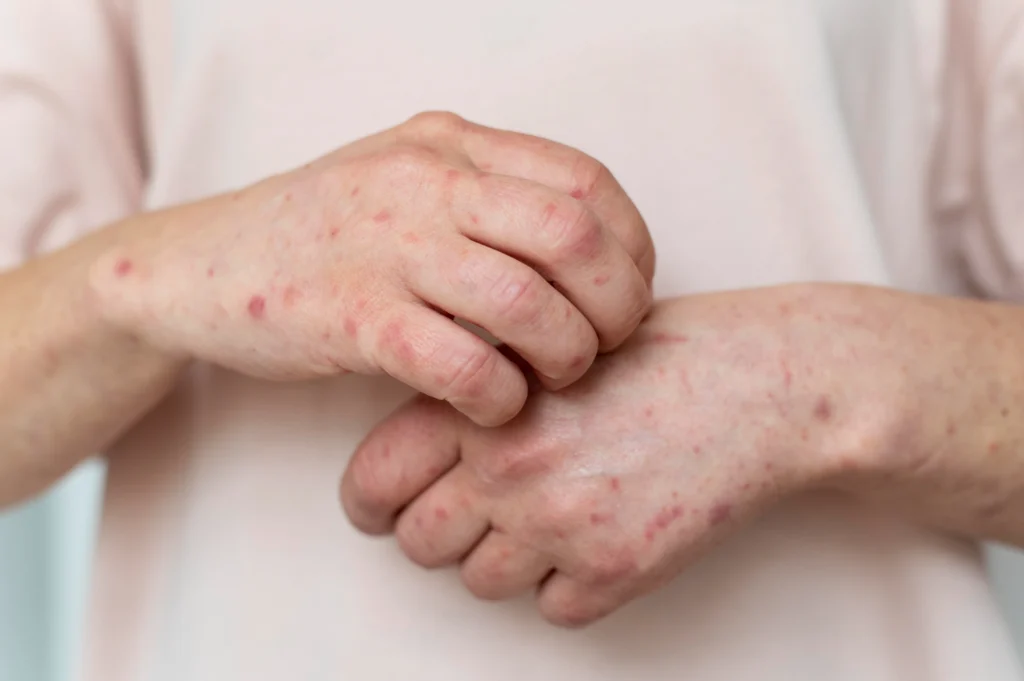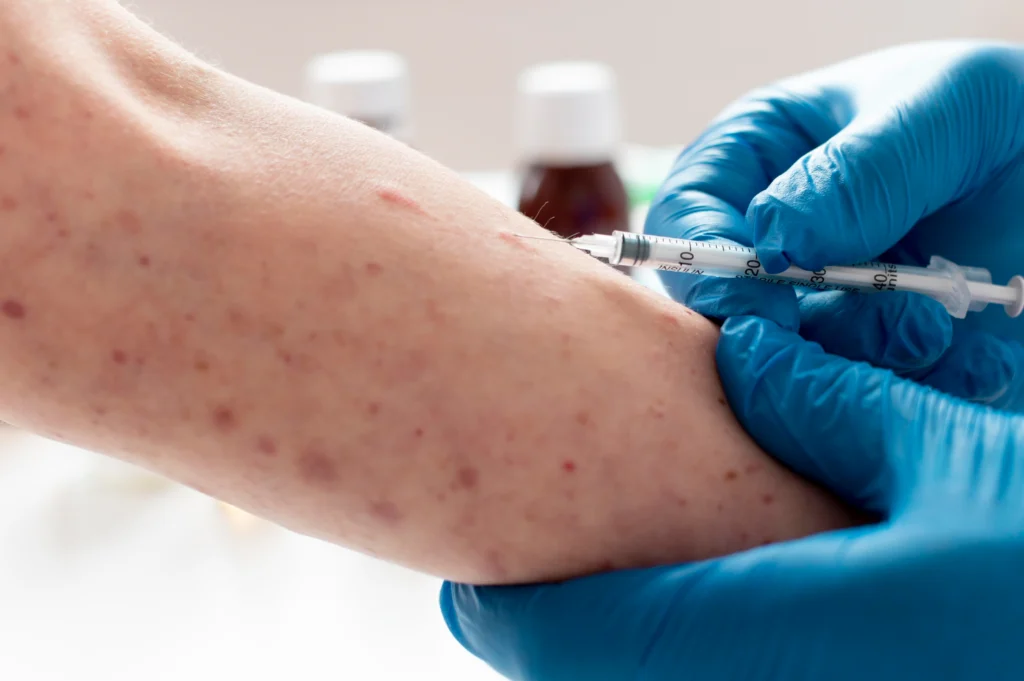Table of Contents
- Introduction
- Importance of Awareness About New Viruses
- What is Monkeypox?
- Transmission and Spread
- Symptoms of Monkeypox
- Signs and Symptoms
- Diagnosis and Testing
- Treatment and Management
- Prevention and Awareness
- Conclusion
Introduction

In the past few years, many new virus diseases have appeared around the world, posing severe health risks to everyone. One of these, monkeypox, also called mpox, is getting more attention as a new virus in 2024. Because monkeypox is becoming more common and could spread, people need to know more about it. It can be lessened by learning about how it spreads, what signs it causes, and how to treat it. This blog aims to give you a complete picture of monkeypox while stressing the importance of staying aware and watching out for new virus threats.
Importance of Awareness About New Viruses
As trade and travel worldwide continue to grow, the chance of infectious diseases spreading across countries has grown. Recently, viruses like COVID-19 and monkeypox have spread, making it clear that people need to learn more about new diseases. Not only does knowing give people the power to protect themselves, but it also makes communities stronger. Real-time information on infectious diseases, such as monkeypox, can be found on sites like Worldometer. This helps both the public and healthcare workers keep an eye on trends and outbreaks.
What is Monkeypox?
Definition and Background
Monkeypox is a viral zoonotic disease caused by the monkeypox virus, which belongs to the Orthopoxvirus genus. It was first identified in 1958 when outbreaks occurred in laboratory monkeys, hence the name. However, the virus is primarily transmitted to humans through contact with infected animals, such as rodents and primates. The first human case was reported in the Democratic Republic of the Congo in 1970.
Historical Context and Emergence as a New Virus (New Virus 2024)
While monkeypox has been known for a long time, it only recently became a major public health issue, especially in 2024. Several factors have been linked to this resurgence, such as changes in the environment, more interactions between people and animals, and gaps in tracking and reporting. Because of this, the virus has started to spread to places it hasn’t been before, which is why health officials are calling it a new viral threat.
Way back in 1970, in the Democratic Republic of the Congo.
Transmission and Spread
How Monkeypox Spreads
Most of the time, monkeypox is spread by touching the fluids or sores of a sick person or animal. Transmission from person to person can happen through respiratory droplets and contaminated surfaces, especially when people are in close touch for a long time. People are also worried about how the virus could spread in communities because it can be passed on through sexual contact.
Implications of a “Broken Human Import” in Disease Transmission
Breaks in health systems can cause diseases to spread out of control, which is what the term “broken human import” means. Outbreaks can happen when there isn’t enough surveillance, healthcare equipment isn’t good enough, or people aren’t taught enough about public health. Understanding these effects is important for developing effective methods for prevention and control.
Symptoms of Monkeypox
Overview of Common Symptoms
Symptoms of monkeypox usually show up 5 to 21 days after being exposed to the virus. At first, the symptoms may look like those of other viral illnesses, making it hard to tell immediately. Some common signs are
- Fever
- Headache
- Muscle aches
- Backache
- Swollen lymph nodes
- Chills
- Exhaustion
Detailed Description of Monkeypox Symptoms
- Fever: Often the first symptom, fever may be accompanied by chills and sweating.
- Headache: Patients may experience severe headaches, persisting throughout the illness.
- Muscle Aches: Generalized muscle pain is joint and may be debilitating for some individuals.
- Lymphadenopathy: Swollen lymph nodes are a distinguishing feature of monkeypox and can help differentiate it from smallpox.
- Rash: After the initial symptoms, a rash typically develops, progressing from macules to bumps, blisters, and eventually scabs.
Focus on Specific Symptoms: Monkey Pox Rash, Viral Skin Rash, Pocks
The swelling that monkeypox causes is often the most straightforward sign to spot. People usually get it on their face, but it can spread to other body parts, like the palms and bottoms of the feet. Although this skin rash looks a lot like chickenpox or smallpox, the fact that the lymph nodes are swollen helps to tell it apart from other diseases that look like pox.
Signs and Symptoms
Differentiate Between Signs and Symptoms of Monkeypox
To evaluate, you need to know the difference between signs and symptoms. Symptoms are experienced by the patient and recorded by them, like a headache or fever. On the other hand, signs can be seen or measured, like a rash or swollen lymph nodes. Recognizing both can help diagnose and treat problems more quickly.
Visual Representation with Monkey Pox Pictures for Better Understanding
Adding pictures and infographics to this area can help people learn by assisting them to see and find symptoms more quickly. Seeing pictures of the rash at different times can help you understand it better and spot it sooner.
Diagnosis and Testing
How Monkeypox is Diagnosed
A combination of clinical evaluation and laboratory tests is used to confirm a diagnosis of monkeypox. Doctors and nurses examine the patient’s past, symptoms, and possible contact with the virus. Polymerase chain reaction (PCR) testing is the best way to prove someone has monkeypox because it accurately identifies the virus.
Importance of Recognizing Symptoms Early
Early detection of monkeypox signs is essential for controlling and managing the disease. Quick detection keeps infected people away from others, lowering the risk of spreading the disease. Public health efforts that teach people about the symptoms and signs of monkeypox can also be very helpful in finding it early.
Treatment and Management

Current Treatment Options for Monkeypox
No antiviral drug has been approved to treat monkeypox at this point. The primary treatment method is supportive care, which focuses on relieving symptoms and avoiding problems. Antiviral medications like tecovirimat (Tpoxx) may be used in severe cases and under certain conditions.
Home Care Tips for Managing Symptoms
Individuals diagnosed with monkeypox should isolate themselves to prevent spreading the virus. Home care tips include:
- Rest: Ensure plenty of rest to aid recovery.
- Hydration: Stay hydrated by drinking fluids.
- Pain Management: Over-the-counter pain relievers can help alleviate symptoms.
- Skin Care: Clean the rash and avoid scratching to prevent secondary infections.
Prevention and Awareness
Tips on Preventing Monkeypox Infection
Preventing monkeypox infection involves several vital strategies:
- Avoid Contact: Stay away from sick animals and avoid contact with infected individuals.
- Hygiene Practices: Wash hands frequently with soap and water or use hand sanitizer.
- Safe Handling of Animals: If you work with animals, follow safety guidelines to minimize exposure.
- Vaccination: Vaccination against orthopoxviruses may provide some cross-protection against monkeypox, particularly for high-risk individuals.
The Importance of Staying Informed About New Pandemics
As new pandemics occur, staying current on possible risks and ways to avoid them is essential. People and groups can better prepare for new health threats by getting information from reliable sources and following the public health department’s advice.
Conclusion
To sum up, knowing the signs of monkeypox is essential for acting quickly and managing a spread. As a new virus danger in 2024, educating people about it has never been more critical. Being aware and informed are two essential things that people can do to help stop the spread of monkeypox and protect public health.
Frequently Asked Questions (FAQs)
- What is monkeypox?
Monkeypox is a viral zoonotic disease caused by the monkeypox virus, part of the Orthopoxvirus family. It primarily occurs in Central and West Africa and features symptoms like fever, headache, and a distinctive rash that resembles smallpox.
- What does monkeypox look like?
Monkeypox rash starts with red spots, progressing to raised bumps, blisters, and pus-filled lesions. It typically begins on the face and can spread to other body areas, often accompanied by swollen lymph nodes.
- How do you get monkeypox?
Monkeypox spreads through direct contact with infected animals or humans. Modes of transmission include handling infected animals, close contact with infected individuals, and sexual contact.
- What happened to monkeypox?
Monkeypox has become a public health concern due to recent outbreaks outside its usual regions. Increased human-animal interactions and lapses in monitoring have contributed to its resurgence in 2024.
- Can allergies cause swollen lymph nodes?
Yes, allergies can lead to swollen lymph nodes due to inflammation. However, this is less common than lymph node swelling caused by infections. If lymph nodes remain swollen or are concerning, it’s best to consult a healthcare professional.


